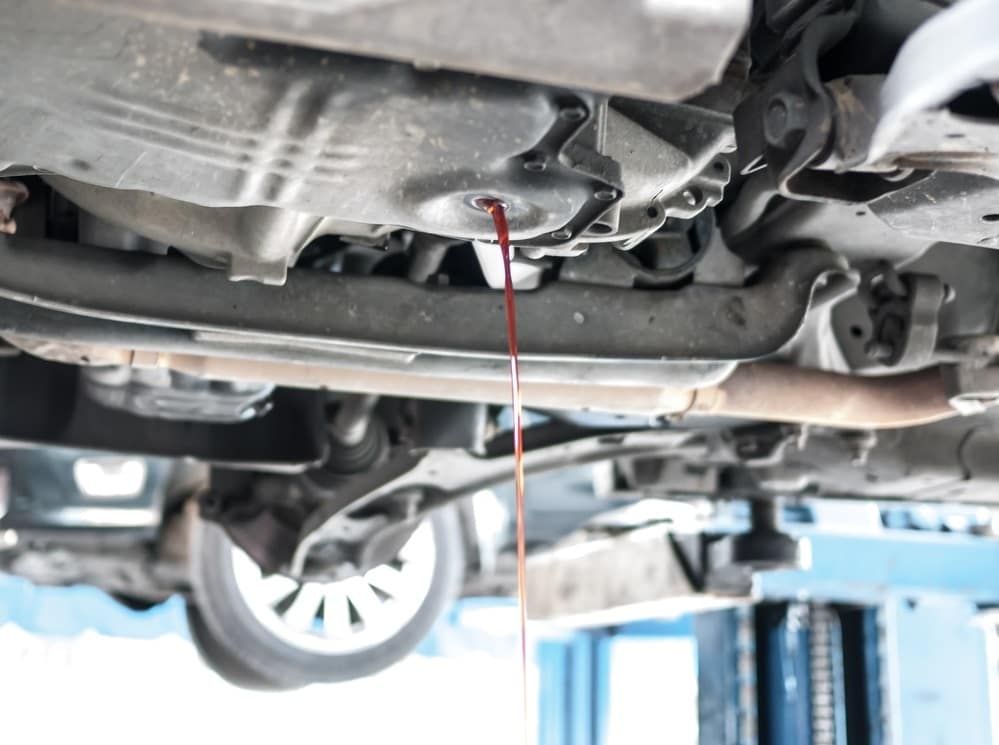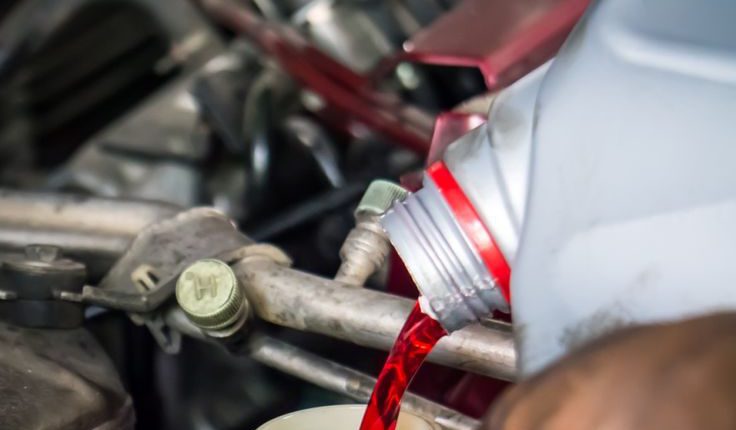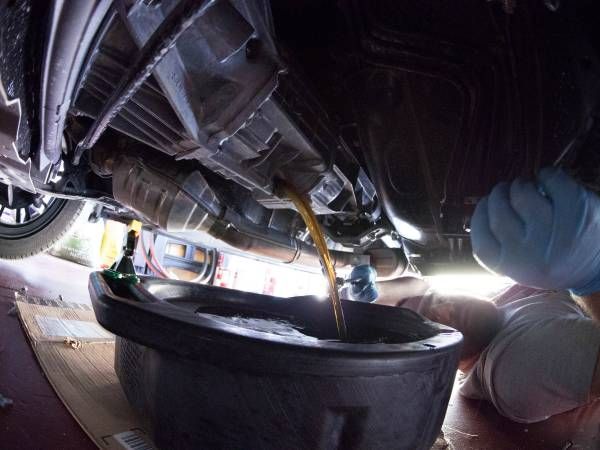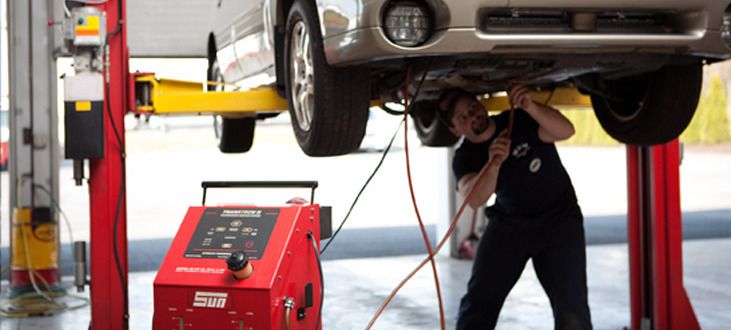Transmission flush vs fluid change: Are the services the same? We know that many drivers are always confused between these forms of fluid maintenance and don’t know which one will be right for the vehicle. We understand your concern and that’s why we want to go deep down and highlight the differences between a transmission flush vs change to help you keep your transmission fluid always in good condition.
Contents
Transmission Flush: Everything You Need To Know
What Is A Transmission Flush?
Transmission fluid is the compound that lubricates the machine parts and especially the gears inside the gearbox, helping the transmission operate smoothly and stably. In addition, it also has anti-wear and anti-rust effects. Maintaining the fluid of the gearbox at a stable level not only helps the car operate better and more powerfully but also increases the life of the transmission. Over time, due to working in high temperatures, the oil molecules are easily broken, the oil is oxidized, the oil quality is no longer the same, and the lubricating ability and reduced cooling.
At this time, transmission fluid flush is a good action to do. Transmission flushing is a maintenance process to remove 100% of the old transmission fluid, deposits, and dirt from a vehicle’s transmission and replace them with new fluid. The transmission fluid drain is designed to prevent transmission problems and keep your vehicle running properly. This process is simple like cleaning the worn fluid with fresh fluid to keep your transmission healthy.

When You Need To Flush The Transmission Fluid?
According to the auto repair shop, drivers will need to flush the transmission fluid every 60,000 miles or every 3 years to keep their car working in good condition. To know the exact time to flush the gearbox fluid, you can refer to the manufacturer’s instructions. In case, if your vehicle is equipped with a sealed transmission (no oil dipstick), you still need to flush the fluid when the car has run 100,000 – 160,000 miles.
The second warning sign that tells you to flush your transmission fluid is when you notice the fluid turn into brown or dark red on the dipstick because fresh transmission fluid always comes into the red.
Slipping gear is also an alarm bell about the condition of your transmission fluid. If your transmission fluid is excess dirt and contaminants, it can block the fluid flow, thereby reducing hydraulic power. As a result, there may not be enough power to stay in the gear.
Have trouble shifting gears: Whether it’s a manual or automatic transmission. If the transmission has too much dirt or deposits in the fluid, the consequence will be a sluggish response when shifting. It can be a good time to drain the transmission fluid if the vehicle delays shifting.
>> Related post: How to Find When Your Car Needs a Transmission Flush
How Much Does It Cost To Flush The Transmission Fluid?
Generally, the typical price range for a transmission flush with a pressurized machine is $125 to $300. The cost depends on a number of elements including the make and model of your car, your location, the type of shop, the machine that the machine use, and any additional services.
It can take 30 minutes to flush the fluid if this job is done by an experienced mechanic. One thing that has a significant effect on the cost of the job is how much a transmission flush your vehicle requires. The more fluid your vehicle needs, the higher the service price will be. Normally, the transmission fluid will have a price that ranges from $5-$7 per quart but some cars will require up to 16 quarts of fluid.
Should I Flush My Transmission Fluid?
There are many debates that revolve around the problem: Is transmission flush good or bad? Many experts believe that flushing the transmission fluid will be a healthy activity for your transmission system. However, some people deny that the high pressure of the transmission fluid is actually bad for the vehicle because it gives rise to a number of problems. They argue that the excessive pressure used to discharge older fluids tends to damage the internal components of the system. It does remove contaminants to some extent, but whether it actually removes all contaminants is a matter of debate.
The question to ask is: Flushing transmission fluid is good or bad? In most cases, flushing the transmission is fine! You want to replace 100% of the old contaminated fluid with fresh, new fluid. Especially, when your fluid has more than 50000 miles. If the transmission fluid set has expired, you may choose to change the fluid. Flushing a system has gone so far as to push debris into places inside the transmission where they don’t belong. And of course, this action will severely impact your transmission fluid.
Changing Transmission Fluid
What is a fluid change?
Changing the transmission fluid is a simple process. All we need to do is drain a large amount of the fluid in the reservoir, change a filter and refill the fresh fluid in your pan in one go. The big difference between changing the fluid and flushing is that a fluid change will not replace all the transmission fluid in the reservoir with new fluid.
You can easily understand that you will need to change the transmission fluid if the fluid level is low or loses its viscosity. Using the dipstick, if your fluid is only darker than usual but hasn’t burned or corroded completely, it’s a signal to tell you to change it. The recommended fluid change interval is approx 30000 miles and 60000 miles. And every car will have different ways to tell you if you need to change the fluid.

>> Read more: What to Know When Changing Automatic Transmission Fluid
Costs of changing the transmission fluid.
What does it cost to change the transmission fluid? The cost you will pay for a changing fluid will range from $80-$250 for both manual and automatic transmission and the price will depend on each dealer or service center. And the average price will be estimated at around $100. In addition, when changing the transmission fluid, we recommend you should replace or clean the filter or pan. The price for replacing the filter ranges from $15-$30 and for the gaskets around $75-$150.
Changing the transmission fluid: Is it good or bad for your car?
We’re going to cover the question “A fluid change can damage your transmission fluid?”, you might have heard but still do not have an answer. A fluid change can’t go to damage any components in your transmission. Problems will start to arise when you change the fluid if your clutch has worn out or has been damaged over time.
If you still replace the fluid after these parts have the signal of wearing. This may cause slippage. The old liquid contains particles that actually help with displacement, making it more gritty to allow for a tighter grip. New fluids do not contain this substance and may not grip firmly, causing slippage.
Transmission Flush vs Fluid Change: Which is Better For Your Car?
After reading the above analysis, should I get a transmission flush or change it? The selection of the appropriate method depends entirely on the transmission fluid condition as well as the car model. However, before you make a decision, we would like to confirm that flushing the transmission fluid and a fluid change are two completely different services.
The key difference between these services is that changing the transmission fluid removes about 20%-40% of the total fluid volume. While flushing the fluid will remove most of the contaminants from the fluid with fresh, clean liquid. However, the last goal of a flush fluid and a fluid change is also to improve the performance and the life of your transmission. To help you make the decision easier, we will analyze some pros and cons of these transmission services.
The advantages of flushing the transmission fluid.
- Many drivers believe that flushing the fluid can help remove dirt and material from an engine, improving engine performance and life. Old fluid can be left in the transmission during a fluid change, contaminating the new fluid and causing performance problems. Transmission flush will help you avoid this risk.
- Transmission flush will be performed less frequently (every 60000 miles) While a fluid change typically occurs after 30,000-mile driving intervals.
- The fluid flush will push all the old liquid out under pressure and run the cleaner through the system to change the fluid completely. This is an effective way to reset your transmission to its original new state. This allows optimum performance to be achieved as the transmission runs only on the fresh fluid.

Disadvantages of the transmission fluid
- The typical total cost you pay for a transmission flush can be nearly double that of a fluid change.
- If your transmission has over 100000 miles on it, flushing the fluid may strip the varnish and cause the control valve to stick
- Not a cure-all: Draining transmission fluid is not an alternative to maintaining a proper transmission. Flushing the gearbox cannot fix major problems caused by a lack of prior maintenance, such as delays and slips.
- The fluid will move in the opposite direction of normal flow due to eddy currents when flushing the transmission fluid. Which can cause the danger of dislodging debris and causing it to settle in a place it shouldn’t.
The benefits of changing transmission fluid
- Save you a cost compared to flushing the transmission fluid. The average cost you pay for an oil change is usually $100 while draining the fluid is up to $150 or more.
- Changing the transmission fluid periodically as the manufactures’ guide. Especially once it has turned black, is a good method to improve your fuel economy. Your transmission and car engine will operate smoother after a fluid change.
- The transmission fluid change process is faster and easier than flushing the fluid. Drivers can absolutely do this procedure at home.
Disadvantages of a fluid change
- Old transmission fluid may still exist in the transmission system when changing the fluid. Which will cause contamination of the new fluid, therefore reducing the performance of the transmission.
- May not completely deplete accumulation, which may lead to faster build-up in less time
Which is better?
A fluid change means that some percentage of the old fluid is left in the transmission system (can be up to 50%). But a thorough flush ensures that every part of the transmission is getting rid of the old oil. So, what’s better for you?
Our advice for you: If you think you don’t often maintain the transmission system in the past. A fluid change will be a better option for you. Because flushing transmission fluid can make the debris or gunk stuck in the fluid lines and even make the aging rubber seals worse. Vice versa, if your gearbox is regularly serviced, flushing the transmission fluid can help you remove all of the old fluid in the reservoir.
Whichever method you choose to maintain your transmission system. Make sure the filter is changed or replaced, and use the manufacturer’s recommended fluid. And the pan is dropped, and check for any problems.
Bottom Line: Transmission Flush vs Fluid Change: Which is Better For Your Car?
It can be said that the gearbox plays a very important role in your car’s system. Therefore, choose the most suitable maintenance method to improve operational efficiency. Whichever is the transmission flush or a flush change you choose? We recommend that you refer to your own manual or get advice from the manufacturers or service centers before making a decision. With the analysis in the above article. We believe that it will help you choose an effective and cost-effective transmission maintenance service.



